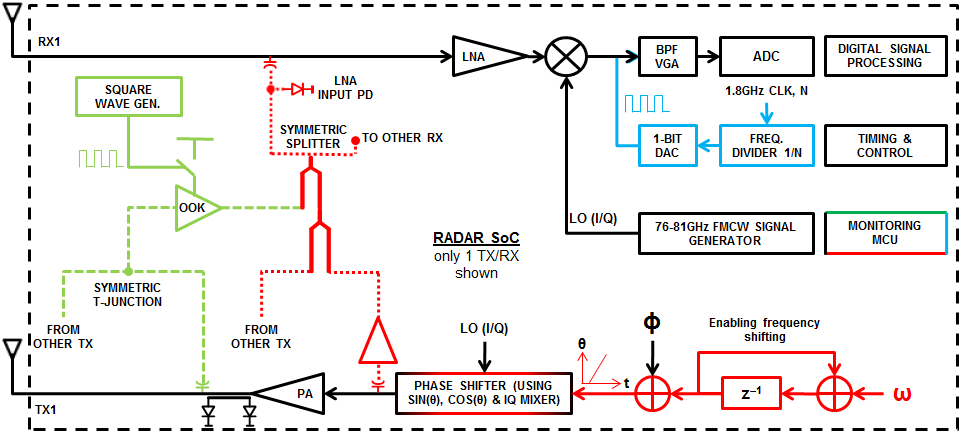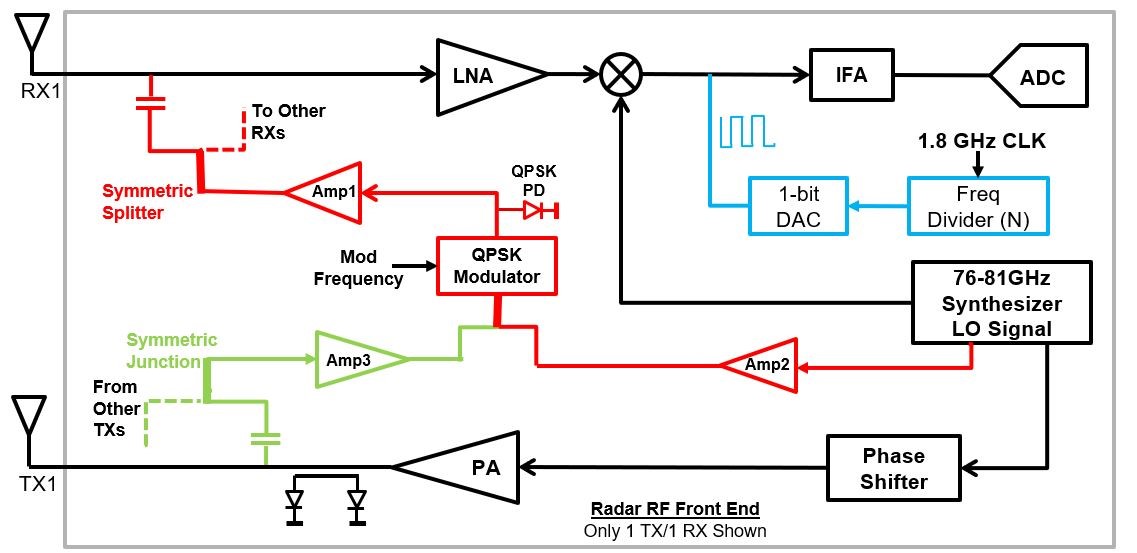SPRACF4C June 2018 – January 2023 AWR1243 , AWR1443 , AWR1642 , AWR1843 , AWR1843AOP , AWR2243 , AWR6843 , AWR6843AOP , IWR1843 , IWR6443 , IWR6843 , IWR6843AOP
- Trademarks
- 1Introduction
- 2Hardware Infrastructure to Support Calibration and Monitoring
-
3List of Calibrations
- 3.1 APLL Calibration
- 3.2 Synthesizer VCO Calibration
- 3.3 LO Distribution Calibration
- 3.4 ADC DC Offset Calibration
- 3.5 HPF Cutoff Calibration
- 3.6 LPF Cutoff Calibration
- 3.7 Peak Detector Calibration
- 3.8 TX Power Calibration
- 3.9 RX Gain Calibration
- 3.10 IQ Mismatch Calibration
- 3.11 TX Phase Shifter Calibration
- 4Impact of Calibration on Gain and Phase
- 5Impact of Interference on the Calibrations and Emissions Caused Due to Calibrations
- 6Scheduling of Runtime Calibration and Monitoring
-
7Software Controllability of Calibration
- 7.1 Calibration and Monitoring Frequency Limits
- 7.2 Calibration and Monitoring TX Frequency and Power Limit
- 7.3 Calibration Status Reports
- 7.4 Programming CAL_MON_TIME_UNIT
- 7.5 Calibration Periodicity
- 7.6 RF Initialization Calibration
- 7.7 Runtime Calibration
- 7.8 Overriding the TX Power Calibration LUT
- 7.9 Overriding the RX Gain Calibration LUT
- 7.10 Retrieving and Restoring Calibration Data
- 8References
- A Calibration and Monitoring Durations
- Revision History
2 Hardware Infrastructure to Support Calibration and Monitoring
The calibration and monitoring mechanisms in TI’s mmWave devices are implemented using a combination of hardware and firmware. Some of the hardware infrastructure blocks enabling these are illustrated here.
Several TX, RX RF and IFA parameter measurements are enabled by the mmWave power detectors coupled to the TX PA outputs and RX LNA inputs, and the TX-RX RF and RX IF loopback structures in the device, illustrated in Figure 2-1.
 Figure 2-1 On-Chip TX-RX Test Signal Loopback Architecture: TX Monitoring, RX Monitoring, RX Baseband Monitoring
Figure 2-1 On-Chip TX-RX Test Signal Loopback Architecture: TX Monitoring, RX Monitoring, RX Baseband MonitoringFor example, the Tx output power calibration is enabled by measuring the internal Tx power using the power detector at the Tx power amplifier output port. The voltage level of the power detector is read using internal general purpose ADCs. These ADCs are also used for measuring other internal voltage levels, such as PLL control voltages, during VCO and APLL calibrations.
Some calibrations, such as RX IF filter calibrations, use the internal IF loopback structure. The loopback signal at different IF frequencies is fed, the IF frequency response analyzed, and appropriate resistor and capacitor bank adjustments are made to realize desired cutoff frequencies. Other calibrations, such as Rx gain calibration, use internal RF loop structures to feed a known amplitude of signal level from the TX chain to the Rx chain. The Rx gain is analyzed by processing the ADC data amplitude and accordingly the Rx chain biases are set to calibrate the gain.
In some other calibrations, fixed look up tables (LUTs, derived from nominal design simulations) are evaluated in the firmware based on measured temperature and analog bias settings adjusted.
In AWR294x, RX Gain Calibrations use the RF Loopback structure to feed known amplitude of signal level from synthesizer to the Rx chain. There is no phase shifter loopback available. The loopback structures in AWR294x are shown inFigure 2-2.
 Figure 2-2 AWR2944 On-Chip TX-RX Test Signal Loopback Architecture: TX Monitoring, RX
Monitoring, RX Baseband Monitoring
Figure 2-2 AWR2944 On-Chip TX-RX Test Signal Loopback Architecture: TX Monitoring, RX
Monitoring, RX Baseband Monitoring